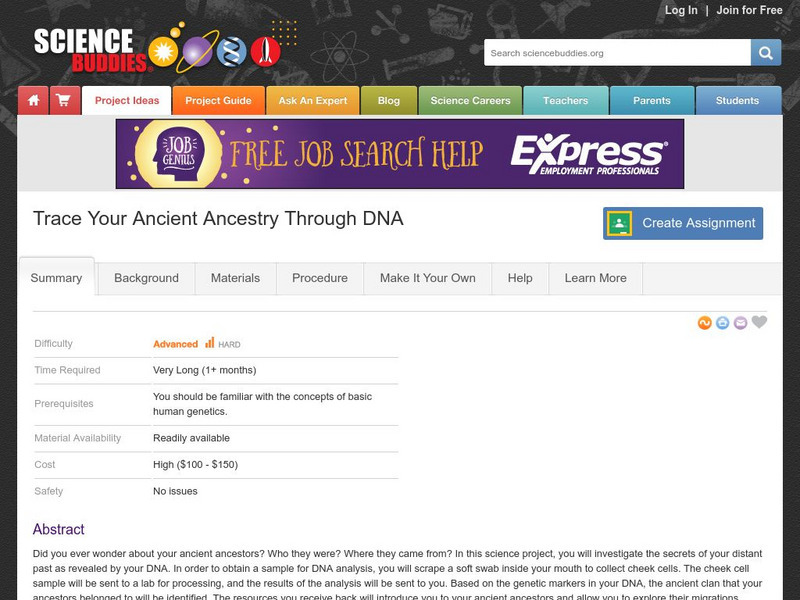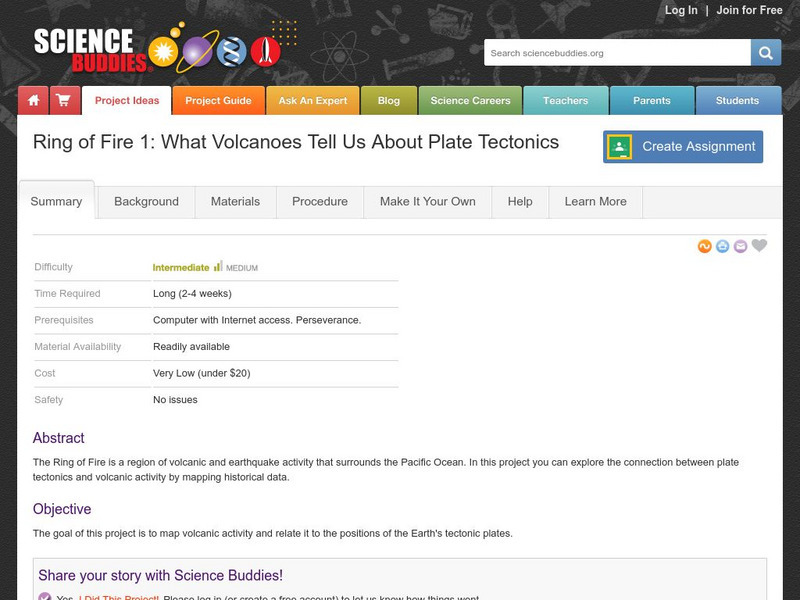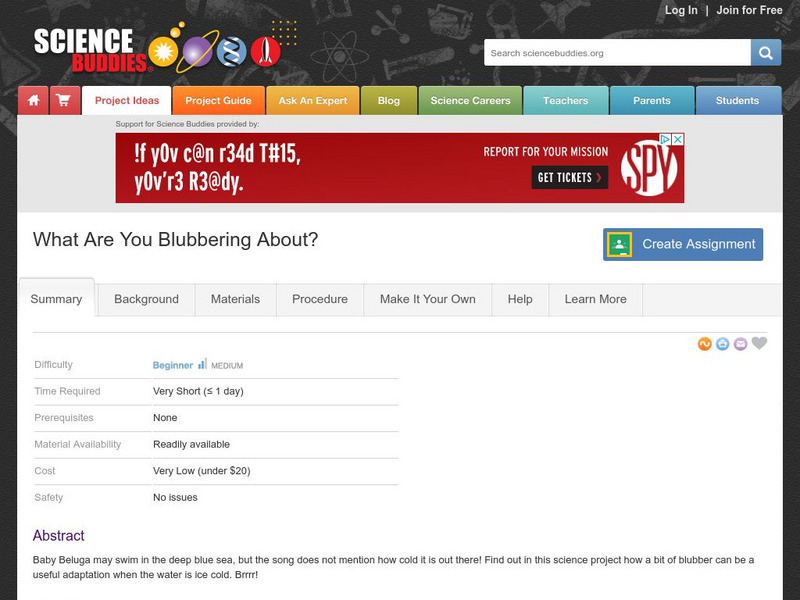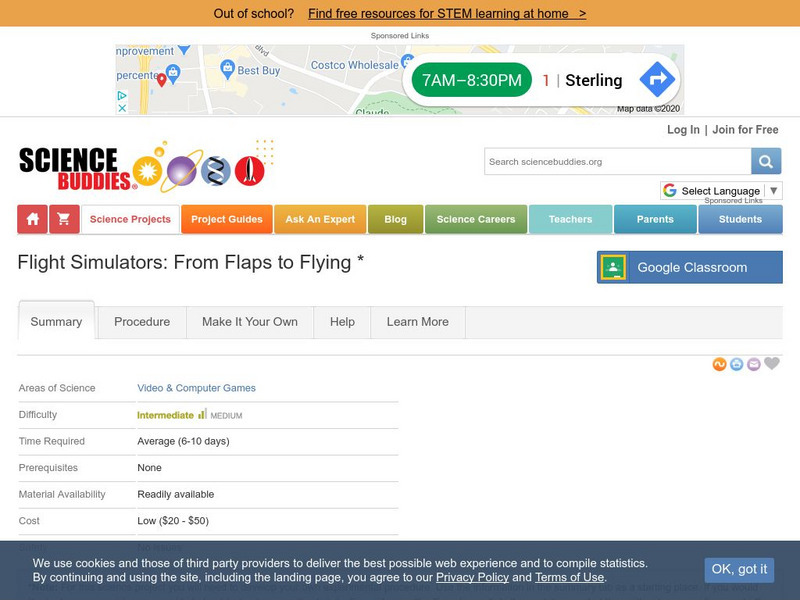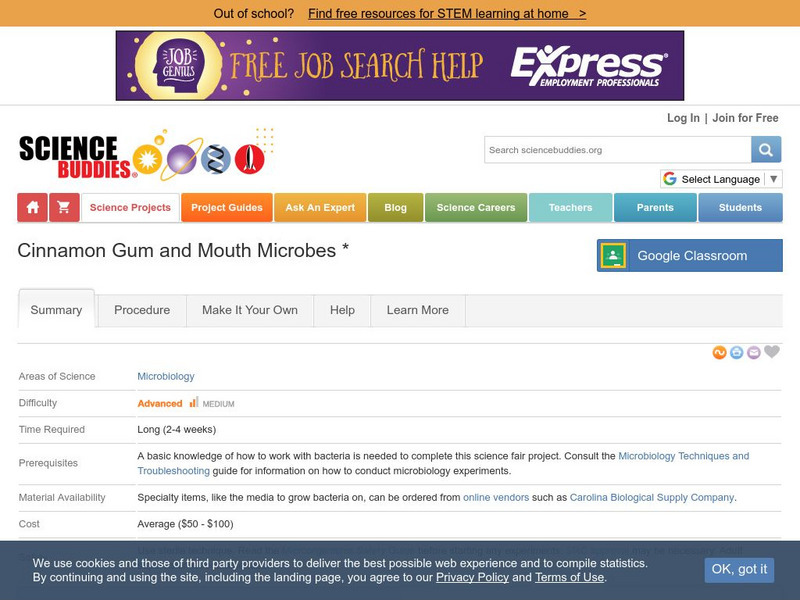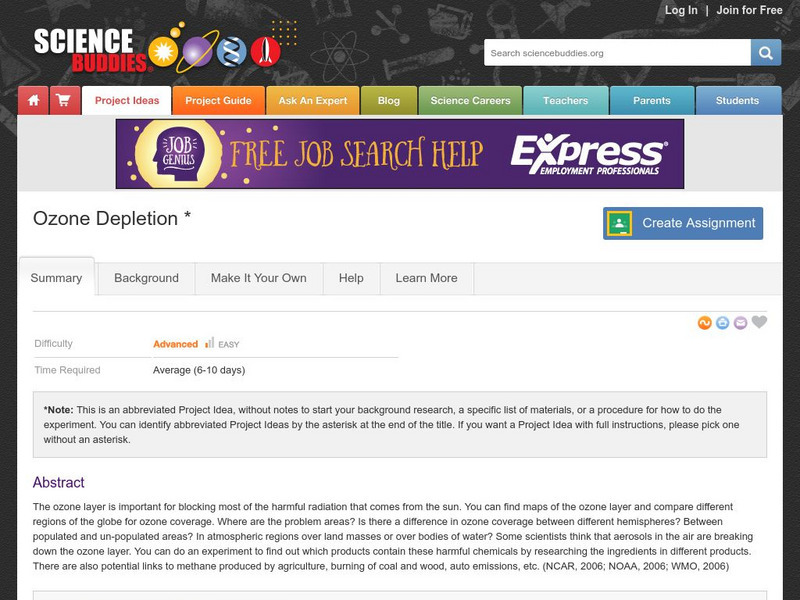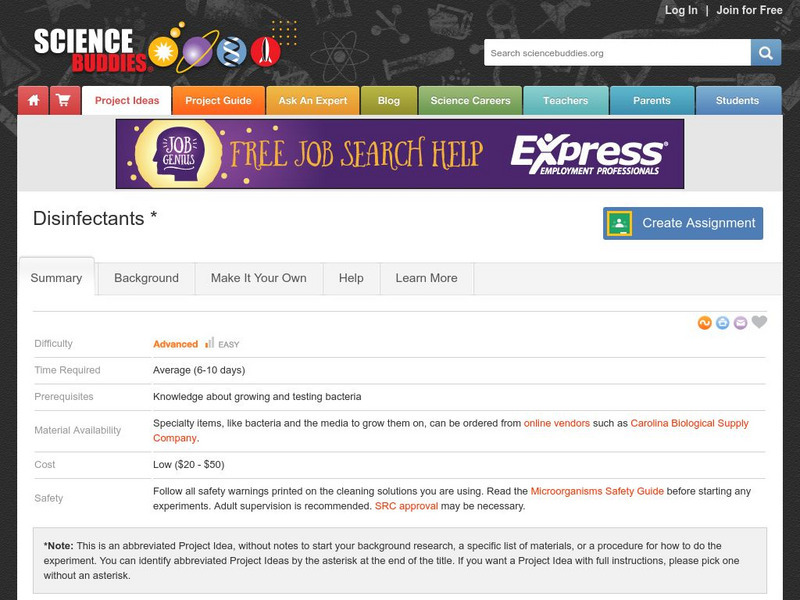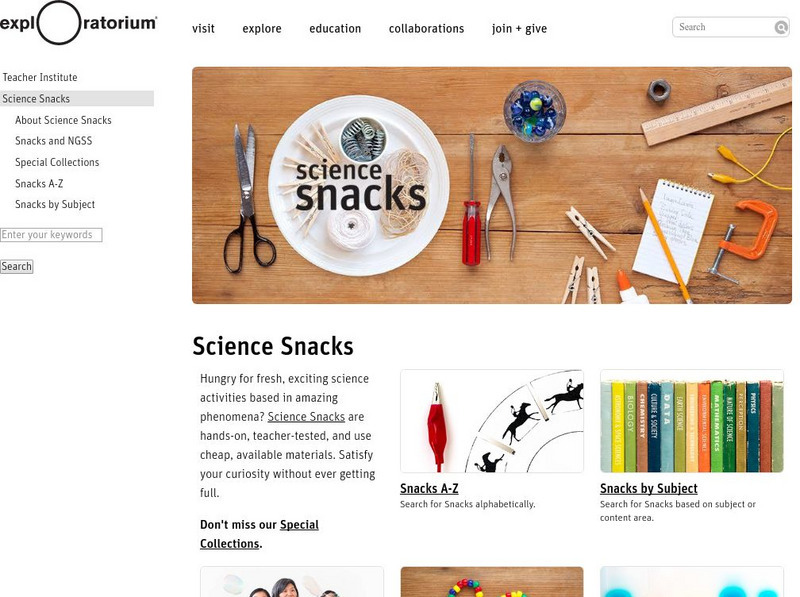Hi, what do you want to do?
Science Buddies
Science Buddies: Trace Your Ancient Ancestry Through Dna
In this science project, you will investigate the secrets of your distant past as revealed by your DNA. In order to obtain a sample for DNA analysis, you will scrape a soft swab inside your mouth to collect cheek cells. Based on the...
Science Buddies
Science Buddies: Shape Changing With the Cyber Squad
In this project, you will make 2-dimensional templates, called nets, that fold up into 3-dimensional (3-D) shapes. By making shapes of different sizes, you will be able to see how 3-D shapes change with size. In your findings you will...
Science Buddies
Science Buddies: Ring of Fire 1: What Volcanoes Tell Us About Plate Tectonics
The Ring of Fire is a region of volcanic and earthquake activity that surrounds the Pacific Ocean. In this project you can explore the connection between plate tectonics and volcanic activity by mapping historical data.
Science Buddies
Science Buddies: What Are You Blubbering About?
Baby Beluga may swim in the deep blue sea, but the song doesn't mention how cold it is out there. Find out in this short project how a bit of blubber can be a useful adaptation when the water is ice cold.
Other
Cdli: Intermediate Projects Physics
This site from the Center for Distance Learning and Innovation provides a really extensive listing of possible science fair projects. Maybe a hundred. Physics, Engineering, Meteorology, Chemistry, Botany. Interesting goodies.
Science Buddies
Science Buddies: Flight Simulators: From Flaps to Flying
Before pilots ever step behind the controls of a real jet they've already logged thousands of virtual air miles. It might not qualify you to fly a real jumbo jet, but you too, can learn the logistics of aviation by experimenting with the...
Science Buddies
Science Buddies: Fun or Frustrating?
Video games have different difficulty settings, from easy to hard mode. Ask volunteers who have never played the game before to try it out. Some of them should use the easy mode and others should use the hard mode, this will ensure that...
Science Buddies
Science Buddies: Measuring Velocity With a Video Camera
A video camera records 30 "frames" or distinct images per second. (That's for an NTSC camera in the U.S. PAL cameras in other areas of the world take 25 frames per second.) You can use this fact to time events and measure velocity. One...
Science Buddies
Science Buddies: Camera 'Shakes'
You can compare the picture quality for photos taken at different shutter speeds with the camera handheld vs. with the camera on a tripod. (This is best done with a camera that has manual exposure control.)
Science Buddies
Science Buddies: Digital Image Processing
Students who are mathematically inclined can use the student version of a program like MatLab or Mathematica to convert a digital image into numbers, then perform operations such as sharpening or special effects. This is a great way to...
Science Buddies
Science Buddies: Image Compression
Compare the strengths and weaknesses of different digital image formats. How does the amount of compression affect a JPEG image? What happens when you save a JPEG image multiple times?
Science Buddies
Science Buddies: Cinnamon Gum and Mouth Microbes
A scientific study has shown that chewing Big Red Gum reduces mouth microbes. Cinnamon oil in gum is a natural defense against mouth bacteria that cause tooth decay and bad breath. Conduct an experiment to compare products with cinnamon...
Science Buddies
Science Buddies: Solubility of Proteins
Some proteins are soluble in aqueous solutions and some are not. Insoluble proteins can be a problem because the proteins can form large aggregates in solution which are difficult to purify, crystallize, and use in experiments. Compare...
Science Buddies
Science Buddies: Growing, Growing, Gone! An Experiment on Nitrogen Fertilizers
Plants need nitrogen to build proteins and nucleic acids to grow healthy stems and leaves. Though the Earth's atmosphere is made up of 79% nitrogen, the form of nitrogen found in the atmosphere cannot be used by plants. In this...
Science Buddies
Science Buddies: Ozone Depletion
The ozone layer is important for blocking most of the harmful radiation that comes from the sun. You can find maps of the ozone layer and compare different regions of the globe for ozone coverage. Some scientists think that aerosols in...
Science Buddies
Science Buddies: Porosity
Soils are made of particles of different types and sizes. The space between particles is called pore space. Pore space determines the amount of water that a given volume of soil can hold. Porosity is the percentage of the total volume of...
Science Buddies
Science Buddies: Composting and Vermiculture
Make your own fertile soil using kitchen scraps, manure, leaves, grass clippings, and other compostable materials. Which materials make the best compost?
Science Buddies
Science Buddies: Disinfectants
This experiment asks you to compare different types of cleaning agents. Household cleaning products, like bleach or Lysol, are included to see which ones kill the most bacteria. Different brands of antibacterial hand soap or dish soap...
Science Buddies
Science Buddies: How Do Roots Grow When the Direction of Gravity Changes?
To start this experiment, you should bring all of your materials together on a flat work surface. The surface might get a little wet, so have some paper towels handy.
PBS
Pbs Kids: Design Squad
This resource provides suggestions for projects that kids can design and engineer using simple materials.
Exploratorium
Exploratorium: Snacks
Exploratorium's snacks aren't edible, but they are good! Use your science skills to discover gravity, learn about biology, do fun experiments.
Instituto Latinoamericano de la Comunicacion Educativa
Red Escolar: Experimentos De Ciencia (Spanish)
Try out 26 different science experiments with this Spanish language resource.
Orca Book Publishers
Orca Book Publishers: Tj and the Rockets Teaching Guide [Pdf]
Hazel Hutchins has written the TJ series of novels. This teaching guide for TJ and the Rockets, about TJ and his science fair project, includes a book summary, teaching ideas and the author's reflections on writing the book.
Science Buddies
Science Buddies: Growing a Soil Menagerie
Everything on our planet is linked by a giant recycling system called the biogeochemical cycle. How our planet recycles and reuses everything we need to support life is explained by making a miniature biosphere in this lab. You will also...





